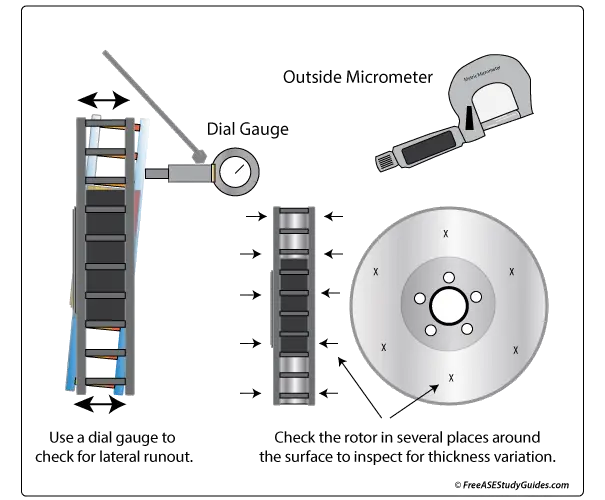Rotor Lateral Runout

Lateral runout is the side-to-side movement of the brake rotor as it rotates. When this gets excessive, pad and rotor wear will result. This excessive movement will result in vibration and pulsation in a vehicle's steering wheel or seat. A vibration in the steering wheel indicates a problem with the front rotors. A vibration in the seat indicates a problem with the rears.

Measure lateral runout with a dial indicator. If it is excessive, use an outside micrometer to measure the thickness of the rotor and compare it to the minimum thickness stamped on the rotor. This process is checking the rotor for parallelism. Check at least eight spots around the rotor to find the thinnest spot.

Lateral runout results from uneven lug nut torque and damaged studs or debris between the hub and rotor. A rotor can often be resurfaced to correct this variance.